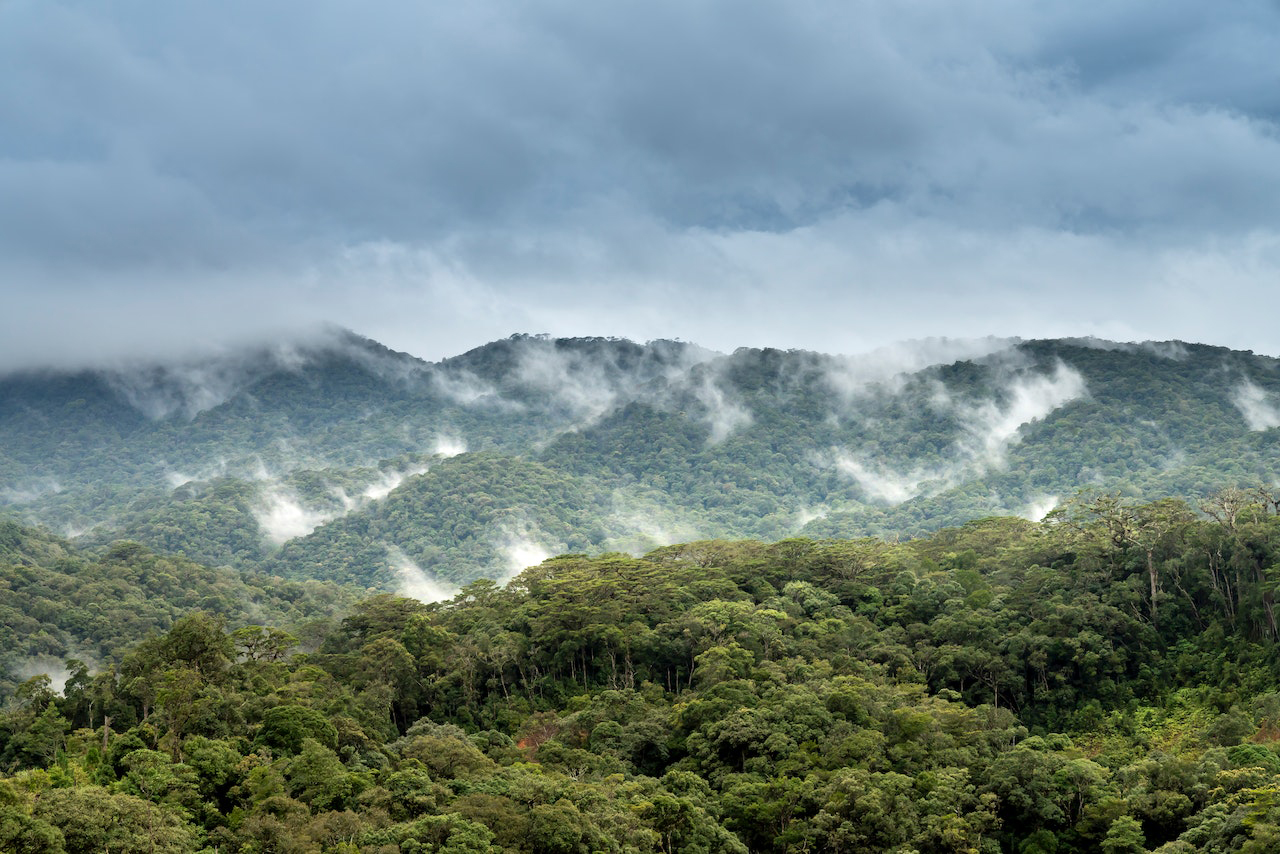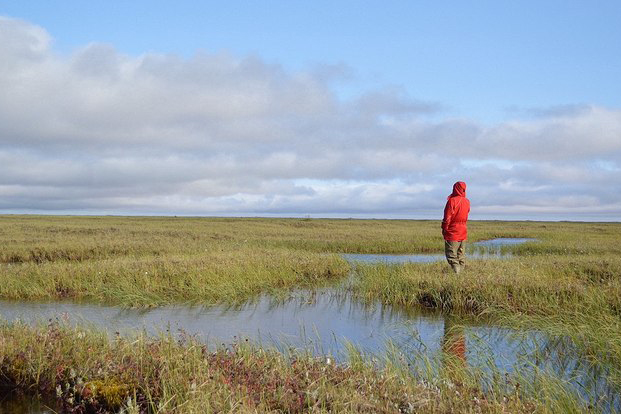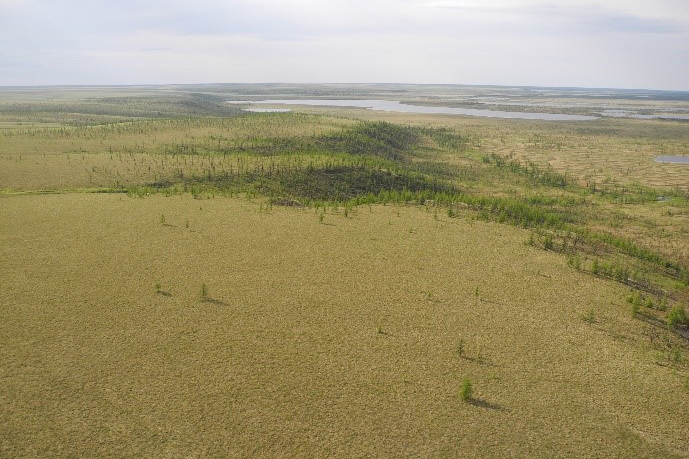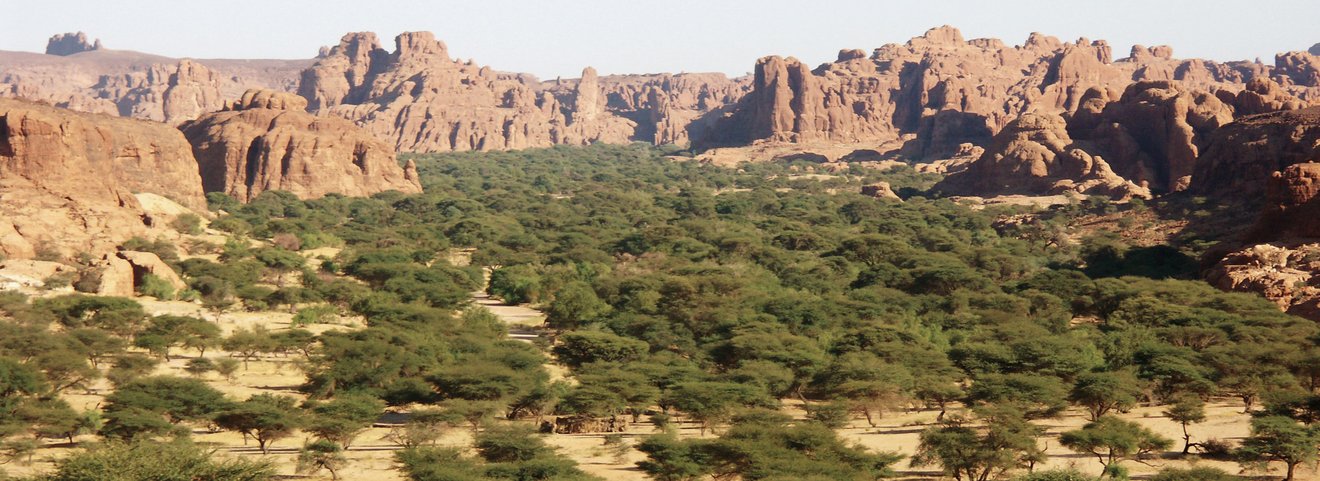Climate shapes vegetation, and vegetation in turn changes climate, for example, by soils and plants reflecting sunlight differently or by plants cooling an otherwise dry environment through transpiration. The Climate Vegetation Dynamics Group aims at understanding these terrestrial biogeophysical feedback processes in the Earth's climate system. To this end, we address the following questions: How has the interaction between the atmosphere, vegetation, land surface, and ocean evolved in the past and how might it evolve in the future? Under what conditions might this interaction lead to abrupt transitions to new climate and ecosystem states? (Photo credit for header picture: Stefan Kröpelin, Cologne)

Group members and their research expertise
| Name | Status | Topics (visit the personal web pages to learn more) |
|---|---|---|
| Martin Claussen | Group leader | Global climate - vegetation interaction in past and present day climate |
| Stephan Bakan | Guest (DMG) | German Meteorological Society |
| Manuel Chevalier | Guest (Univ. Bonn) | Paleovegetation reconstruction |
| Anne Dallmeyer | Scientist | Paleo vegetation dynamics |
| Pinhsin Hu | Guest (MPI-BGC, Jena) | Trait-based modeling of plant functional diversity and its interaction with the climate |
| Leonore Jungandreas | Guest (iDIV, Leipzig) | nteraction between deep convection and land surface in Holocene North Africa |
| Christian Reick | Guest | Theory of the terrestrial carbon cycle |
| Nora Farina Specht | Guest | aharan mega lakes and wetlands and their interaction with vegetation and climate |
| Hans von Storch | Guest (Hereon) | History of Climate Research in Hamburg |
Group members and publications
- Torres Mendonca, G., Reick, C. & Pongratz, J. (2024). Timescale dependence of airborne fraction and underlying climate-carbon-cycle feedbacks for weak perturbations in CMIP5 models. Biogeosciences, 21, 1923-1960. doi:10.5194/bg-21-1923-2024 [supplementary-material][publisher-version]
- Bellomo, K., Meccia, V., D’Agostino, R., Fabiano, F., Larson, S., von Hardenberg, J. & Corti, S. (in press). Impacts of a weakened AMOC on precipitation over the Euro-Atlantic region in the EC-Earth3 climate model. Climate Dynamics: available online. doi:10.1007/s00382-023-06754-2
- Brönnimann, S. & Claussen, M. (2023). Zur Aktualität von Humboldts Klimaforschung: Geleitwort. In Nehrlich, T. & Strobl, M. (Eds.), Ueber die Hauptursachen der Temperatur-Verschiedenheit auf dem Erdkörper: Schriften zum Klima / Alexander von Humboldt (pp.9-28). Hannover: Werhahn Verlag.
- Chevalier, M., Dallmeyer, A., Weitzel, N., Li, C., Baudouin, J.-P., Herzschuh, U., Cao, X. & Hense, A. (2023). Refining data-data and data-model vegetation comparisons using the Earth mover's distance (EMD). Climate of the Past, 19, 1043-1060. doi:10.5194/cp-19-1043-2023 [publisher-version]
- Dallmeyer, A., Poska, A., Marquer, L., Seim, A. & Gaillard-Lemdahl, M.-J. (2023). The challenge of comparing pollen-based quantitative vegetation reconstruction with outputs from vegetation models - a European perspective. Climate of the Past, 19, 1531-1557. doi:10.5194/cp-19-1531-2023 [supplementary-material][publisher-version]
- Duque-Villegas, M. (2023). Understanding the dynamics of late Quaternary African humid periods. Phd Thesis, Hamburg: Universität Hamburg. Berichte zur Erdsystemforschung, 272. doi:10.17617/2.3556280 [publisher-version]
- Herzschuh, U., Böhmer, T., Chevalier, M., Dallmeyer, A., Li, C., Cao, X., Hebert, R., Peyron, O., Nazarova, L., Novenko, E., Park, J., Rudaya, N., Schlütz, F., Shumilovskikh, L., Tarasov, P., Wang, Y., Wen, R., Xu, Q. & Zheng, Z. (2023). Regional pollen-based Holocene temperature and precipitation patterns depart from the Northern Hemisphere mean trends. Climate of the Past, 19, 1481-1506. doi:10.5194/cp-19-1481-2023 [publisher-version]
- Herzschuh, U., Böhmer, T., Li, C., Chevalier, M., Hébert, R., Dallmeyer, A., Cao, X., Bigelow, N., Nazarova, L., Novenko, E., Park, J., Peyron, O., Rudaya, N., Schlütz, F., Shumilovskikh, L., Tarasov, P., Wang, Y., Wen, R., Xu, Q. & Zheng, Z. (2023). LegacyClimate 1.0: A dataset of pollen-based climate reconstructions from 2594 Northern Hemisphere sites covering the last 30kyr and beyond. Earth System Science Data, 15, 2235-2258. doi:10.5194/essd-15-2235-2023 [publisher-version]
- Jungandreas, L., Hohenegger, C. & Claussen, M. (2023). How does the explicit treatment of convection alters the precipitation-soil hydrology interaction in the mid-Holocene African humid period?. Climate of the Past, 19, 637-664. doi:10.5194/cp-19-637-2023 [publisher-version]
- Kirsten, F., Dallmeyer, A., Bernbeck, R., Böhmer, T., Busch, R., Hessari, M., Pollock, S. & Schütt, B. (2023). Were climatic forcings the main driver for Mid-Holocene changes in settlement dynamics on the Varmin Plain (Central Iranian Plateau)?. PLoS One. doi:10.1371/journal.pone.0290181 [supplementary-material][publisher-version]
- Shi, X., Werner, M., Yang, H., D'Agostino, R., Liu, J., Yang, C. & Lohmann, G. (2023). Unraveling the complexities of the Last Glacial Maximum climate: the role of individual boundary conditions and forcings. Climate of the Past, 19, 2157-2175. doi:10.5194/cp-19-2157-2023 [publisher-version][supplementary-material]
- Specht, N. (2023). Dynamic interaction between climate, lakes and vegetation over North Africa. Phd Thesis, Hamburg: Universität Hamburg. Berichte zur Erdsystemforschung, 270. doi:10.17617/2.3523251 [publisher-version]
- Dallmeyer, A., Kleinen, T., Claussen, M., Weitzel, N., Cao, X. & Herzschuh, U. (2022). The deglacial forest conundrum. Nature Communications, 13: 6035. doi:10.1038/s41467-022-33646-6 [supplementary-material][multimedia][publisher-version][supplementary-material]
- Duque-Villegas, M., Claussen, M., Brovkin, V. & Kleinen, T. (2022). Effects of orbital forcing, greenhouse gases and ice sheets on Saharan greening in past and future multi-millennia. Climate of the Past, 18, 1897-1914. doi:10.5194/cp-18-1897-2022 [supplementary-material][publisher-version]
- Herzschuh, U., Böhmer, T., Li, C., Cao, X., Hébert, R., Dallmeyer, A., Telford, R. & Kruse, S. (2022). Reversals in temperature-precipitation correlations in the Northern Hemisphere extratropics during the Holocene. Geophysical Research Letters, 49: e2022GL099730. doi:10.1029/2022GL099730 [publisher-version]
- Hu, P.-h. (2022). Impact of plant functional diversity on climate – a modelling study using JeDI-BACH in ICON-ESM. Phd Thesis, Hamburg: Universität Hamburg. Berichte zur Erdsystemforschung, 256. doi:10.17617/2.3430193 [publisher-version]
- Jungclaus, J., Lorenz, S., Schmidt, H., Brovkin, V., Brüggemann, N., Chegini, F., Crueger, T., de Vrese, P., Gayler, V., Giorgetta, M., Gutjahr, O., Haak, H., Hagemann , S., Hanke, M., Ilyina, T., Korn, P., Kröger, J., Linardakis, L., Mehlmann, C., Mikolajewicz, U., Müller, W., Nabel, J., Notz, D., Pohlmann, H., Putrasahan, D., Raddatz, T., Ramme, L., Redler, R., Reick, C., Riddick, T., Sam, T., Schneck, R., Schnur, R., Schupfner, M., von Storch, J.-S., Wachsmann, F., Wieners, K.-H., Ziemen, F., Stevens, B., Marotzke, J. & Claussen, M. (2022). The ICON Earth System Model Version 1.0. Journal of Advances in Modeling Earth Systems, 14: e2021MS002813. doi:10.1029/2021MS002813 [publisher-version]
- Lee, J., Claussen, M., Kim, J., Hong, J.-W., Song, I.-S. & Hong, J. (2022). Effect of nitrogen limitation and soil biophysics on Holocene greening of the Sahara. Climate of the Past, 18, 313-326. doi:10.5194/cp-18-313-2022 [publisher-version][supplementary-material]
- Rodriguez-Caballero, E., Stanelle, T., Egerer, S., Cheng, Y., Su, H., Canton, Y., Belnap, J., Andrae, M., Tegen, I., Reick, C., Pöschl, U. & Weber, B. (2022). Global cycling and climate effects of aeolian dust controlled by biological soil crusts. Nature Geoscience, 15, 458-463. doi:10.1038/s41561-022-00942-1 [publisher-version]
- Schneck, R., Gayler, V., Nabel, J., Raddatz, T., Reick, C. & Schnur, R. (2022). Assessment of JSBACHv4.30 as a land component of ICON-ESM-V1 in comparison to its predecessor JSBACHv3.2 of MPI-ESM1.2. Geoscientific Model Development, 15, 8581-8611. doi:10.5194/gmd-15-8581-2022 [publisher-version]
- Specht, N., Claussen, M. & Kleinen, T. (2022). Simulated range of mid-Holocene precipitation changes to extended lakes and wetlands over North Africa. Climate of the Past, 18, 1035-1046. doi:10.5194/cp-18-1035-2022 [supplementary-material][publisher-version]
- Dallmeyer, A., Claussen, M., Lorenz, S., Sigl, M., Toohey, M. & Herzschuh, U. (2021). Holocene vegetation transitions and their climatic drivers in MPI-ESM1.2.. Climate of the Past, 17, 2481-2513. doi:10.5194/cp-17-2481-2021 [supplementary-material][publisher-version]
- Jungandreas, L. (2021). Influence of the representation of convection on the mid-Holocene West African Monsoon. Phd Thesis, Hamburg: Universität Hamburg. Berichte zur Erdsystemforschung, 247. doi:10.17617/2.3357859 [publisher-version]
Contact:
Prof. Dr. Martin Claussen
Group leader
Phone: +49 (0)40 41173-212
martin.claussen@mpimet.mpg.de
More Content

Towards improved CO2 predictions
What factor limits the predictability of atmospheric CO2 concentration? Scientists from the Max-Planck-Institute for Meteorology, in collaboration…

Methane emissions from Arctic ponds are sensitive to warming-induced vegetation changes
Arctic ponds are important sources of methane emissions, and knowledge on their role in the future methane budget is lacking. A new study led by…

The conundrum of forest expansion after the last ice age
How fast the Northern Hemisphere forest macro ecosystem tracks strongly warming climates such as projected for the near future is largely unknown. In…


